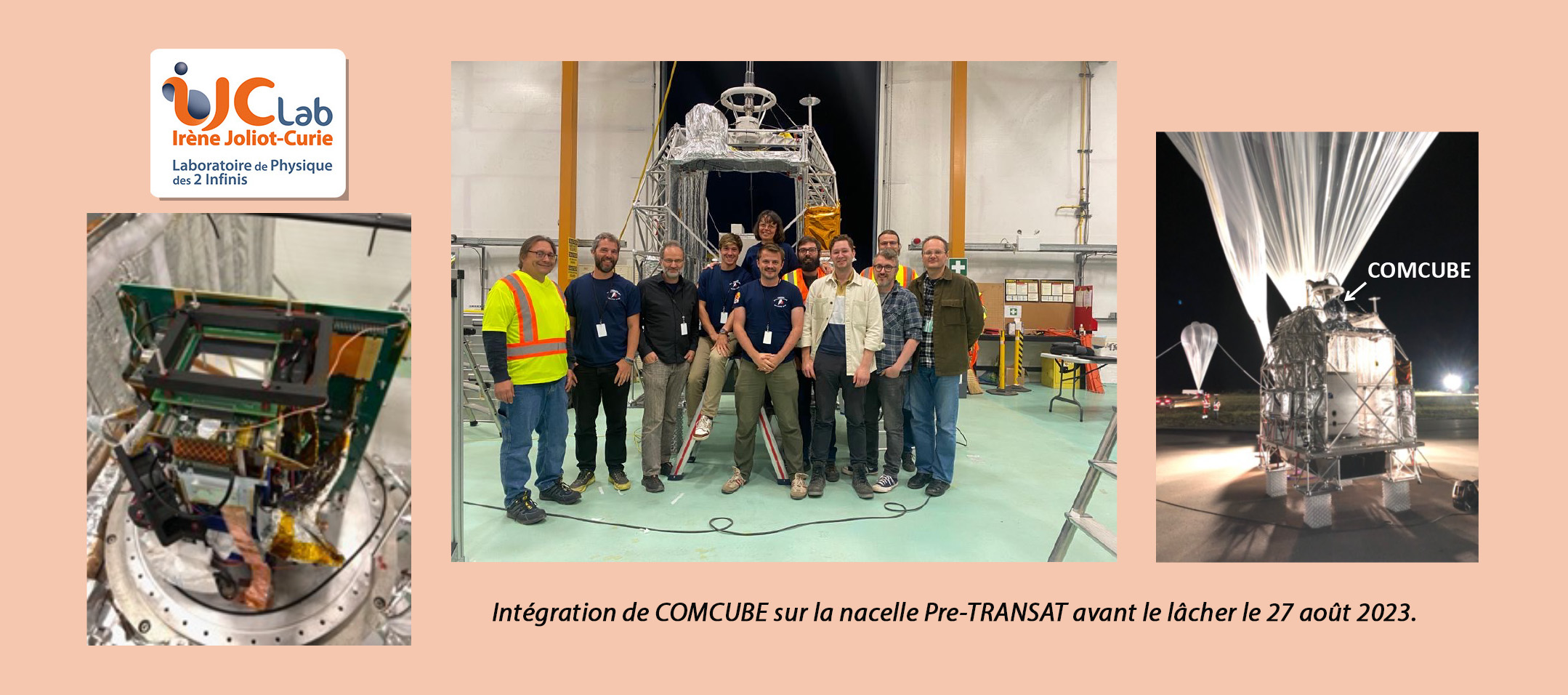
Around ten space missions dedicated to the detection of gamma-ray bursts with nanosatellites are under development around the world. The successful completion of these projects should make it possible to create an unprecedented network of "CubeSats" to continuously monitor the sky in gamma rays and possibly trigger observations in other wavelengths in the event of remarkable events. The COMCUBE project aims to bring a new dimension to this network of nanosatellites by adding measurements of the linear polarization of the prompt emission of gamma-ray bursts. Gamma-ray polarimetry can provide a unique diagnosis of the physics of ultra-relativistic jets produced in gamma-ray bursts and the nature of their astrophysical progenitor.
In order to test COMCUBE detection technologies in the near space environment, the European collaboration behind the project asked CNES to test a scale model of the high-altitude gamma instrument under an open stratospheric balloon. A first successful flight took place this summer from the Timmins base in Canada as part of the CNES “Strato Science 2023” campaign. Eleven people from the COMCUBE collaboration traveled to Canada for this campaign, including six engineers and researchers from the Engineering, Nuclear and A2C Divisions of IJCLab. The release took place on Sunday August 27, 2023 at 3:11 a.m. local time. After a climb phase of approximately 3 hours to a maximum altitude of nearly 37 km, the experiment remained for more than 10 hours at this altitude before falling again at the end of the afternoon near Timmins, without causing of damage to the gamma telescope. The telemetry data sent to the ground by radio link show that the instrument operated without interruption throughout the flight, in temperature conditions measured on the nacelle varying between -50°C and +95°C depending on the altitude and the 'Sun exposure !
This flight was intended to prepare for the first Atlantic crossing of an open stratospheric balloon planned for the summer of 2024 between the Kiruna base in Sweden and the Canadian Northwest Territories. It made it possible to validate the feasibility of a daytime flight of at least four days around the summer solstice, using on-board batteries powered by solar panels deployed under the nacelle. This long-duration transatlantic flight proposed by CNES will make it possible to test the imaging and gamma polarimetry capabilities of COMCUBE with an astrophysical source: the Crab Nebula and its pulsar.
See also : The CNES Strato Sciences 2023 campaign.





